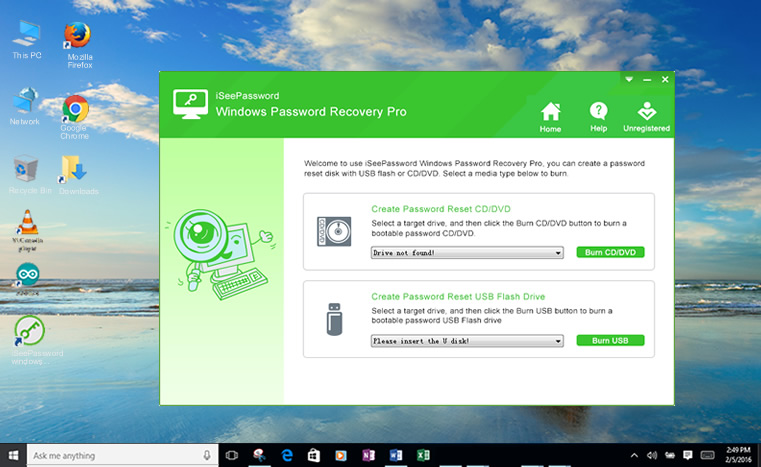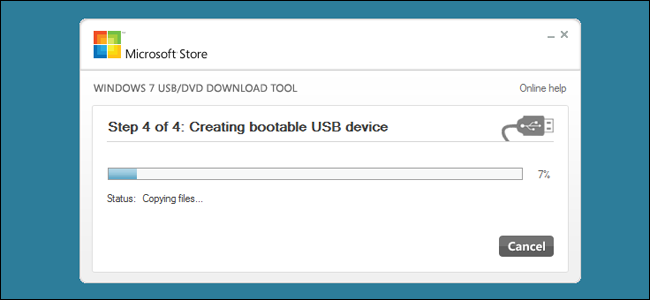The last release of Mac OS doesn't have the option to create a bootable USB from Bootcamp like previous versions, and it is a problem because that require uses other tools. I am updating this post today Dec 12, 2018. The reason is that I was only using UNetbootin to. PassFab 4WinKey is an incredible tool that can be used to make Windows bootable USB on Mac. It can be used for several other purposes as well, like for removing or resetting the Windows Admin password. You can know how to create Windows 10 bootable USB on Mac using this tool by following the steps given below. To run Windows 10 on a Mac computer from USB drive or other external hard drive, you can make use of AOMEI Partition Assistant Professional. It comes with a feature named “Windows To Go Creator”, which allows you to create a Windows to Go USB drive and boot it on any Mac computer. Choose your Windows 10 ISO image and USB Drive Select the ISO file and Destination Disk to Make a bootable USB on Mac Browse and select the Windows 10 ISO file you had downloaded earlier. Be sure to select your USB drive in the Destination Disk. Download Windows 10 ISO File to USB Drive on Windows Computer. If you do not have a Mac or Chromebook, you can still download Windows ISO File to USB Drive by switching the web browser on your computer to a Non-Windows User Agent. Open Google Chrome web browser on your computer and visit Microsoft’s ISO download site.
It is possible to Download Windows 10 ISO File directly to USB Drive from Microsoft’s download page, instead using Media Creation Tool on your computer to create Windows ISO File.
Windows 10 ISO File Direct Download from Microsoft
As you must have noticed, Microsoft’s official download page does not provide the option to download Windows ISO File.
Instead, it provides the option to Download Windows Media Creation tool to your computer and requires you to run the Media Creation tool on your computer to create an ISO File.
As mentioned above, it is possible to download Windows 10 ISO File directly to USB Drive using 2 different methods as provided below.
1. Download Windows 10 ISO File to USB Drive Using Mac or Chromebook
The easiest way to download Windows 10 ISO File directly to USB Drive is by visiting Microsoft’s download website on a MacBook or Chromebook.
When you visit Microsoft’s website using a different operating system, it reveals the option to download Windows ISO File.
1. Visit Microsoft’s ISO download site using a Mac or Chromebook.
2. On Microsoft’s download site, select the Edition of Windows 10 that you want to download and click on Confirm.
3. Select Language and click on Confirm.
4. On the next screen, select 32-bit Download or 64-bit Download as required for your computer.
If you are not sure, refer to this guide: How to Check if Your computer is 32 0r 64-bit.
5. When prompted, select USB Drive as the download location and click on Save.
2. Download Windows 10 ISO File to USB Drive on Windows Computer
If you do not have a Mac or Chromebook, you can still download Windows ISO File to USB Drive by switching the web browser on your computer to a Non-Windows User Agent.
1. Open Google Chrome web browser on your computer and visit Microsoft’s ISO download site.
2. Click on 3-dots menu icon > hoover mouse over More Tools and click on Developer Tools.
3. On Developer screen, click on the menu icon > hoover mouse over More Tools and click on Network Conditions.
4. On Network conditions screen, uncheck Select Automatically option and click on the down-arrow next to Custom.
5. From the menu that appears, select Chrome – Mac as the User Agent and do not close the Developer Window.
Note: You can select any Non-Windows User Agent.
6. After selecting User Agent, refresh the download page (Do not close Developer Tools) and you will see the option to Download ISO File.
7. Select the Edition of Windows that you want to download and click on Confirm.
8. Select Language and click on Confirm.
9. On the next screen, select either 32-bit Download or 64-bit Download to start the download.
Note: You might be able to Upgrade From 32-bit to 64-bit Windows 10
10. When prompted, select USB Drive as the destination for download and click on Save.
Note: The browser’s user agent will return back to normal as soon as you close Chrome’s developer tools.
To troubleshoot an issue with Windows 10 (especially boot-related issues), it can be handy to boot into Windows 10 not installed on a Boot Camp partition. It is relatively straightforward to create a bootable USB Flash drive to boot to the Windows 10 installer and open up a DOS prompt for troubleshooting.
What is needed
- USB Flash drive (8 GB or larger recommended)
- Windows 10 Installer ISO for Windows 10

Tool Make Usb Window 10 On Mac Os
Preparation

All the preparation is done in macOS on the Mac that is having an issue booting Windows. It is important to use this Mac since it will be used to identify the correct Windows drivers.
USB Flash Drive
The USB Flash drive must be formatted as exFAT.
- Insert an 8GB or larger flash drive into a USB port on the Mac
- In Disk Utility, format the Flash drive as exFAT. Quit Disk Utility after this operation completes.
Boot Camp Driver
Open Boot Camp Assistant in the Utilities folder and download the current Windows Support Software from the “Action” dropdown in the menu bar. Save the Windows Support Software to your desktop or other location. Do not save directly to the USB Flash Drive.
Windows Install Media
Download the current install media from the Microsoft website. Windows will not be installed, but the install media will give access to the command line tools in Windows. Select the version of Windows that is closest to the version of Windows installed on the Mac (Windows 8, Windows 10). It does not matter what edition of Windows is used, since Windows is not going to be installed.
Tool Make Usb Window 10 On Macbook
Create Recovery USB Flash Drive
To create the USB Flash drive, follow these steps:
- Mount the Windows ISO downloaded from Microsoft. To mount the ISO, double-click on the ISO in Finder.
- Drag all the files and folders from the mounted ISO to the USB flash drive.
- Drag the contents of the Windows Support Software to the USB flash drive.
- If there is not an AutoUnattend.xml at the top level of the drive (as shown below), download AutoUnattend.xml, unzip it, and add it to the drive. AutoUnattend.xml provides the location of the $WinPEDriver$ folder to load the drivers during boot.
- The 2018 MacBook Air (and potentially Macs after that) cannot load the IntelMEI driver and give a “Windows Setup could not install one or more boot-critical drivers. To install Windows, make sure that the drivers are valid, and restart the installation” message. On the USB flash drive, open the $WinPEDriver$ and remove the IntelMEI folder.
Once the flash drive has been created, it should look like this:
The $WinPEDriver$ folder is important because it contains the drivers for Windows to boot successfully from the USB flash drive and the hardware on that Mac.
Boot from the USB Flash drive
To inject the drivers, the Mac must be booted from the USB flash drive.
- Insert the USB flash drive into an available USB port on the Mac
- Reboot while holding the Option key.
- Select EFI volume in the startup selector.
Tool Make Usb Window 10 On Macbook Air
If Windows does not boot from the USB flash drive after showing the Windows logo, you may have to run the following command to tell the firmware to boot the Windows installer from the USB flash drive. This has been observed on the late-2014 Mac Mini but may affect other models as well. To set the variable:
- Disable SIP by booting to the recovery partition.
- Boot back to macOS and open Terminal. Run the following command and enter the admin password when prompted:
sudo nvram InstallWindowsUEFI=1
Insert the USB flash drive if it is not inserted, reboot, and select the EFI volume from the startup selector.
Note: the InstallWindowsUEFI variable is cleared at each reboot, so you will need to set it again if you do not select the USB Flash Drive.
Command Prompt and Mapped Drives
When Windows 10 starts up, it will prompt for installation of Windows 10. To open a DOS window, press fn-Shift-F10 (or just shift-F10) or click Repair Computer->Troubleshoot->Command Prompt (if available).
Once in the command prompt, there are usually 3 drive letters available: X, C, and D.
- X: This is Windows that you are booted into in memory. The files from the boot.wim on the flash drive are copied to memory and then booted to
- C: Boot Camp partition
- D: The USB Flash drive
Running Utilities
Tool Make Usb Window 10 On Macbook Pro
Within the Windows command prompt, you can run utilities on the Boot Camp partition.
Video
